The wildly unpredictable Zandvoort weather introduced so many moments of jeopardy for the focus of the crowd’s adoration, Max Verstappen.
Yet he delivered regardless of course, a record-equalling nine consecutive victories, three Dutch Grand Prix wins from three. The club beat party continued through the rain just as surely as Verstappen’s imperious form and everyone went home wet but happy.
Coming into any given race weekend this season it’s natural to assume Verstappen is going to win. But the longer the remarkable sequence continues, and the more clearly into focus comes the idea of Red Bull winning every single race, the more the possibility of something going wrong increases. So those moments when the weekend might have slipped away from him despite his clear underlying performance advantage seemed somehow very clearly drawn this time around.
His first lap in Q1, for example. First lap on a wet track on intermediates, the absolute worst combination for a car that tends to be a little more reluctant than the others in generating front tyre temperatures: Max stands on the brakes for Tarzan and it just will not slow. He begins to turn, the front runs wide, he backs off, the rear snaps viscously and before you know it he’s run out of track and is clattering across the gravel.
Had he beached it there, he’d have been starting the race last. Even as he rejoined and guided it through the banked Turn 3, he was wrestling with an evil oversteery moment that may have put a lesser driver hard into the wall.
He’d had such a moment there that morning, in FP3, rescuing the initial slide but in so doing clattering the floor on the kerb and almost putting him in nose-first. Now again. “Where the hell is the grip? What is happening? I’m having moments all over the place.” Getting blocked on the next lap, having to find his space all over again – and all the while there’s a big black cloud hovering. If it arrives before he’s got the lap in, he’s out in Q1… Pressure.
Any of these could have been weekend-defining moments. He drove gingerly on, trying to bring that rubber up to temperature as the McLarens and Williams cars charged around whole seconds faster, blue flags only delaying the process further. Blue flags! In a Red Bull. He remained calm of course. His feel and car control got him out of the emergencies and as the rubber gradually warmed, so he was on his way.
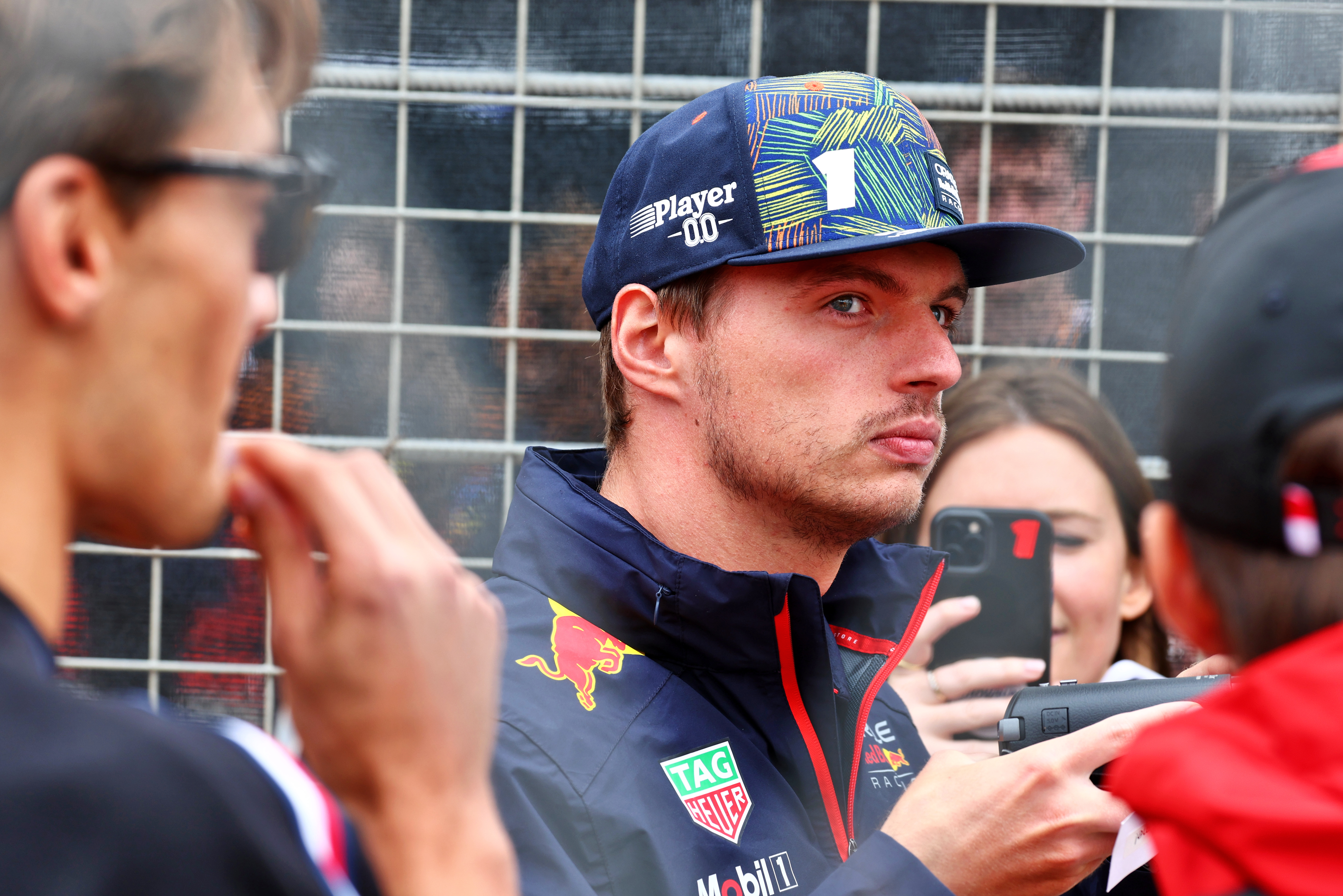
He claims not to feel the pressure of his home event and is generally very successful at sealing himself off from the orange noise. But it would be easy, within that backdrop, for the red zone moments to crack through that protective layer if he wasn’t so emotionally bulletproof.
“Of course he must feel it,” says Christian Horner. “You’d be a robot not to feel it. You can see it in his face. Hundreds of thousands of Dutchies are here to see him do it, the royal family coming here to see him just before he steps in the car. You have to feel that and I think it’s just a sense of relief as he leaves the circuit that he’s ticked that box. He eats in the hospitality, stays in his motorhome, just treats it like any other race.”
But even once he’d stuck the car on pole, Sunday was going to provide many more high-pressure opportunities for it all to go wrong.
Slicks-to Inters
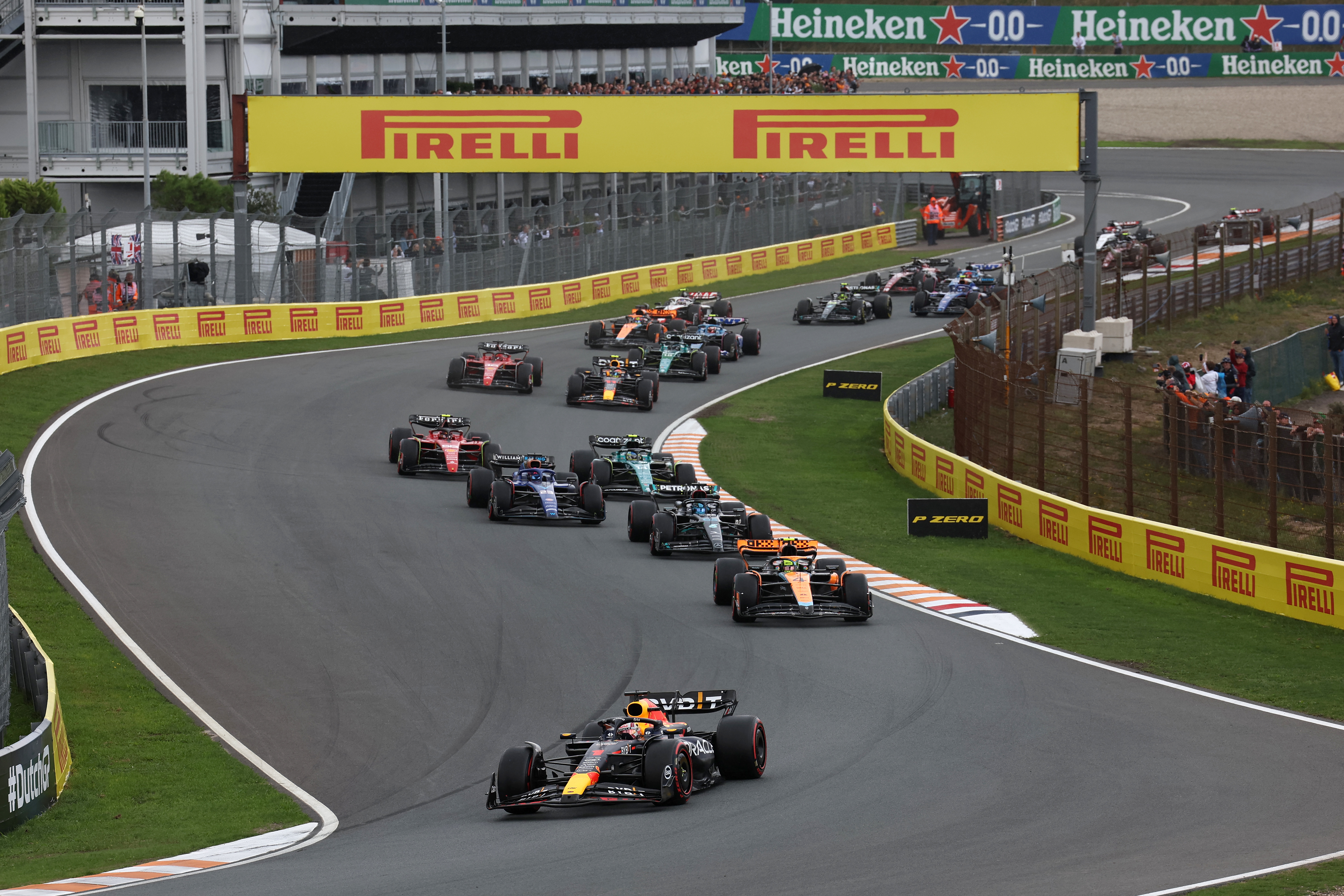
Sitting on the grid with a combination of slick tyres but rain smattering the visor was not the most relaxing way to start the race for anyone but as the leader you’re the first to arrive in the damp braking zones. The rest are taking their cue from the cars ahead.
He’d done a nice hard out-lap but had sat for a worryingly long time on the grid, tyre temperatures falling. He won the start, held onto it from Lando Norris and a brilliantly opportunistic Fernando Alonso and eased away. The track was damp, nothing more. Until that is they arrived at the approach to the final corner where a black cloud had wafted in from the North Sea and deposited itself there.
As the leader, as the man with a big underlying performance advantage over everyone, he had no need to be too reactive, no reason to be trigger-happy by diving straight into the pits for inters. He’d just wait for ‘GP’ to guide him. Team-mate Sergio Perez, back in seventh, had more to gain. He made the call himself. “Shall we box? Let’s box.” Just as his engineer Hugh Bird began to reply, Checo cut him off: “No, box, box.”
In he came, as did Charles Leclerc (he gave them no notice and Ferrari didn’t have his inters ready), Pierre Gasly (the foundation to a great drive which took him all the way to the podium from 12th on the grid), Zhou Guanyu, Yuki Tsuonda, Kevin Magnussen and the debutant Liam Lawson. It was absolutely the right thing to do – but only in hindsight. The rain was heavier and stayed around longer than the radar had been suggesting.
Max came in on the next lap, along with three others (including Fernando Alonso’s Aston Martin which had just overtaken Lando Norris for second). That was the next best strategy (again, in hindsight), but it took Verstappen from six places ahead of his team-mate to four behind, with a deficit of 13s.
It was all about blocking out the opportunities of getting it badly wrong, of potentially going a whole pitstop down for no reason. “Especially in the beginning and when you have these kind of tricky conditions, for sure it was a lot about risk management,” he admitted.
“When I compare it to a few years ago, where I’m not fighting for the championship, I’m driving completely different. But that’s fine. Even while driving like this, I know that I have a car which is capable of a lot. So that probably helps to be a little bit more in control I guess.”
He has the car and he has the driving chops to know he can cover off any downside of being conservative. He was about to demonstrate just how much so. The rate at which he caught Perez was outrageous. Once, that is, he was clear of the cars which had either stayed out on their slicks or had stopped on the lap after Verstappen (ie Norris). Staying out on slicks turned out to be the third-best of the four hindsight options. Alex Albon was the poster boy for this choice. It dropped him over a minute off the lead by lap six. But by lap 7 he was lapping 10s faster and had saved 40s-worth of pit stops.
The worst of the four options – by far – was to stop for your inters on lap three or later. That just lost you at least 20s on lap time but still required you to make the 40s-worth of pitstops (one to change to inters, another to change back to slicks). That’s what McLaren did with Norris and Mercedes did with Lewis Hamilton and George Russell, giving them a mountain of work to do. Hamilton climbed back to sixth, just ahead of Norris who in fending off Russell in the closing laps gave George a puncture and led him to non-finish.
For Norris, the strategy call was particularly unfortunate given that he was leading the race once Verstappen and Alonso had pitted. He would surely have been right in the fighting mix for a podium. Lap 1 stoppers Zhou and Gasly ran there in this phase of the race, but only the latter had the pace to remain there.
Although Perez pulled out a big lead on Zhou, Verstappen was only around 8s behind once he’d scythed past the Alfa – and lapping between 2-4s faster. Perez had made up 13s on Verstappen by making that lap 1 stop, as Verstappen snaked around for an extra lap on slicks in the wet, but by lap 10 the gap was down to 4s.
That’s the lap Alonso pitted from just behind Ocon – and rang alarm bells at Red Bull.
And back to slicks
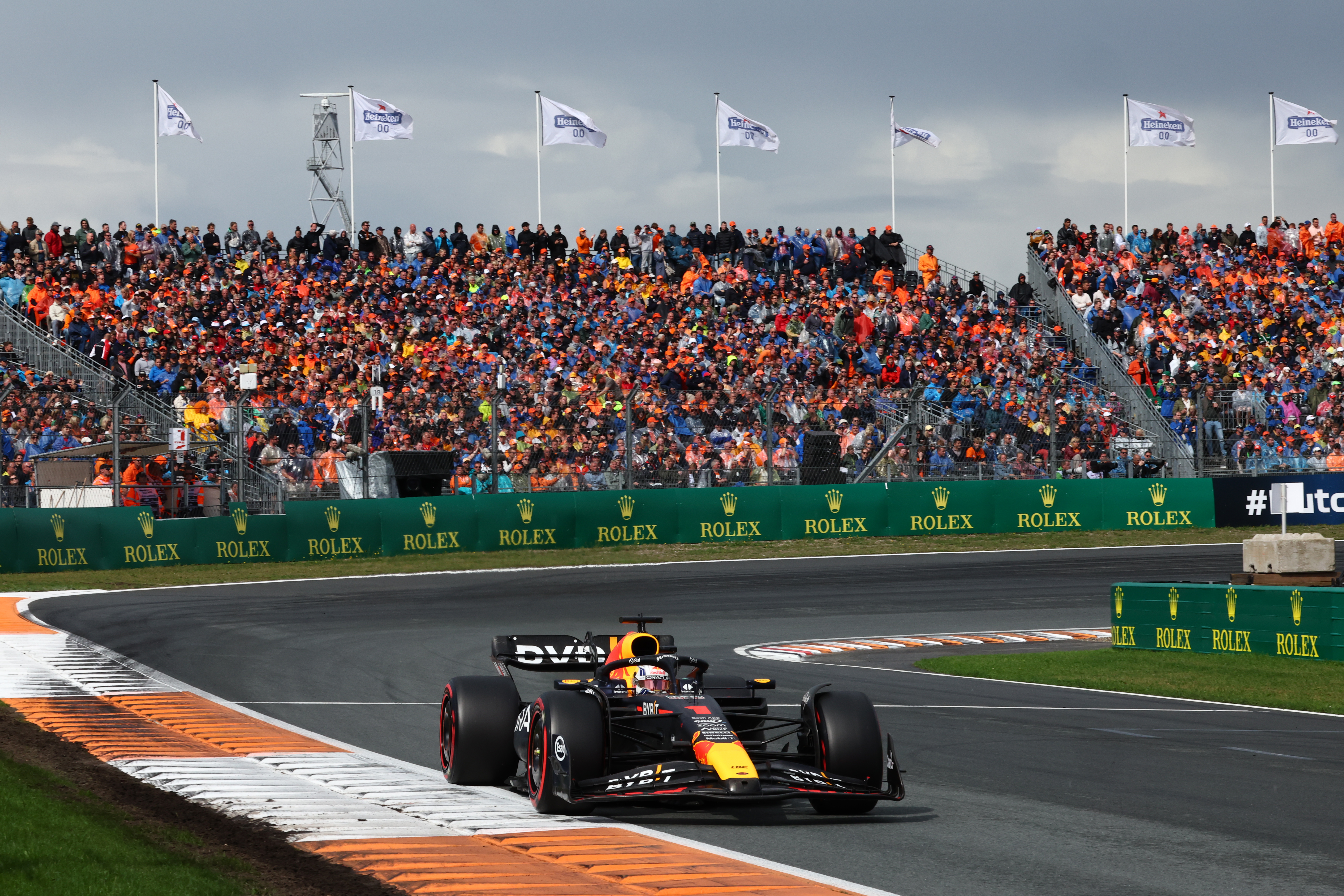
Hindsight again: the ideal time to ditch the inters and get back onto slicks was lap 7. That’s when Albon – on his original slicks and by now down in 15th – began lapping 2s faster than the leader.
When Alonso (and the following Sainz) pitted for slicks on the 10th lap, it potentially put Verstappen at undercut risk if Red Bull didn’t respond immediately. The Aston had been just 5s behind Max and so Verstappen came in the next lap. Which of course also undercut him past Perez and into the lead.
It seemed harsh on Perez to be undercut by your own team, but the logic was unassailable: “You could see from Albon that the circuit was coming alive for the slicks,” explained Horner, “so had we pitted Checo first [Alonso] would have undercut Max and we’d have gone from 1-2 to 1-4, so we pitted Max first with the risk being that he’d undercut Checo but we’d end up 1-2. So it was a no-brainer.”
On the still damp but drying track Verstappen had around 3s over Perez who now headed Alonso, Gasly and Sainz. Then Logan Sargeant dropped the Williams in a big way at Turn 8, after a suspected hydraulics failure from whacking a kerb denied him power steering. This brought out the safety car.
Upon the resumption of racing Verstappen got the jump and pulled far, far away from Perez who had his hands full containing an inspired Alonso. Albon, still on his original slicks, was maintaining a great pace and soon swept past the artificially strategy-boosted runners to tag himself on the back of the dicing Sainz and Gasly.
Piastri could have been in Albon’s position – he’d adopted the same staying out on slicks strategy and had been running a place ahead of him. But he’d flat-spotted a tyre on the 15th lap, forcing a pitstop and thereby losing the advantage of having stayed out. He recovered back to ninth. His contact with Leclerc on the opening lap damaged the Ferrari’s floor sufficiently for it to be retired many laps later after falling towards the back.
Albon ultimately couldn’t hold off the recovering Hamilton and Norris, but eighth was a good result for a Williams on a downforce track.
Here Comes The Rain Again
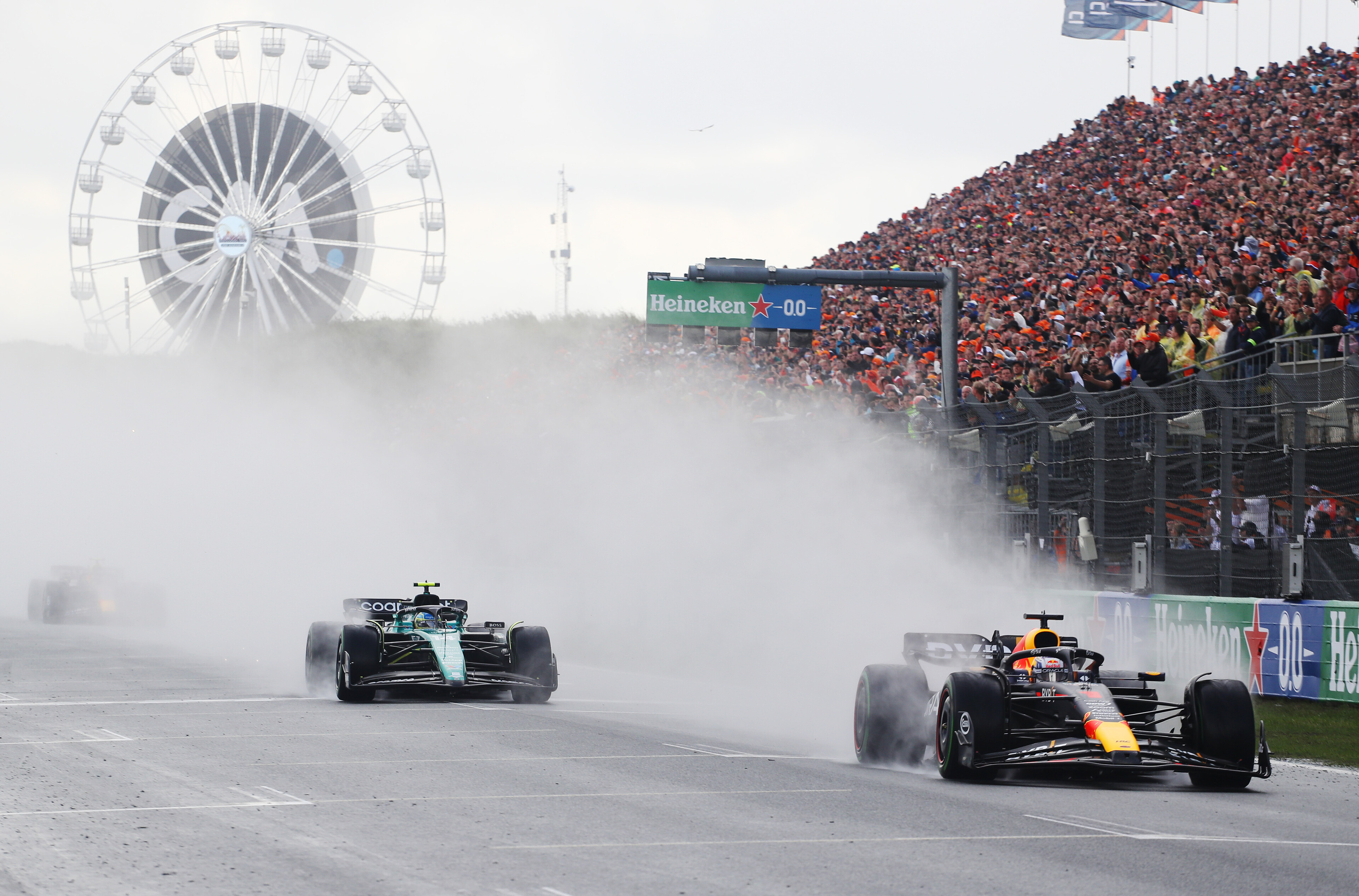
The original slicks had all been replaced by fresh by lap 60 and Verstappen’s 11s lead over Perez meant he was already well past the pit entry when the rain returned. Perez did what he’d done on lap one and made his own reactive call for inters – as did the following Gasly and Sainz.
But it wasn’t disastrously wet for slicks for one more lap so Verstappen and Alonso didn’t lose out by pitting a lap later.
But even as the heavens opened – it was a much heavier downpour than the first one – Verstappen’s victory looked secure. Then Perez showed how easily it could all come undone, locking up at turn 1, spinning on the run-off and lightly damaging the rear wing before rejoining – now behind Alonso.
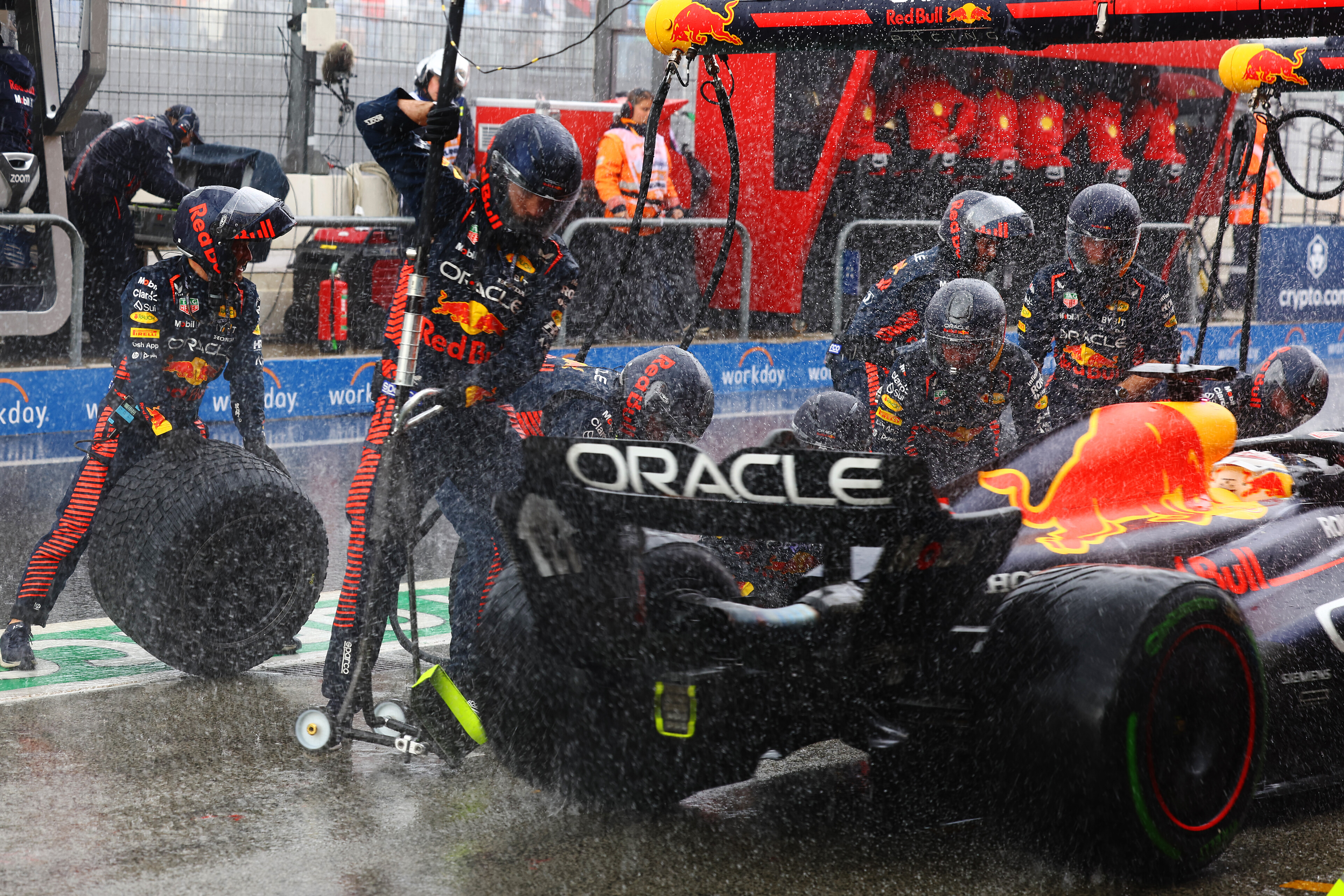
This gave Verstappen more than a pitstop’s-worth of gap – and Red Bull brought him in for a switch to full-wets. Just to be sure. Perez followed him in for the same but was unable to leave the pitlane because the race had just been red-flagged, with cars aquaplaning off.
Fortunately for Perez, the restart order was backdated a lap, moving him back up to third and with a repaired wing as we got going again half an hour later. But even Alonso in full-attack mode on the restart (with inters mandatory) wasn’t enough to unstick Verstappen who pulled himself clear all over again in the remaining eight laps.
Perez had been given a 5s penalty for speeding in the pitlane and so was demoted to fourth in the official results, giving Gasly a richly deserved podium. Sainz’s fifth place actually flattered the Ferrari as Hamilton hassled him hard over the last couple of laps.
So Verstappen was interviewed by Giedo van der Garde, the older Dutch kid who used to race for Jos when Max was still too young. He admitted finally that he’d felt the emotion. Especially after the national anthem. What about the historic ninth consecutive win? “I’ll think about it next week. I’m first going to enjoy this weekend. You know it’s always tough. The pressure is on to perform.”





